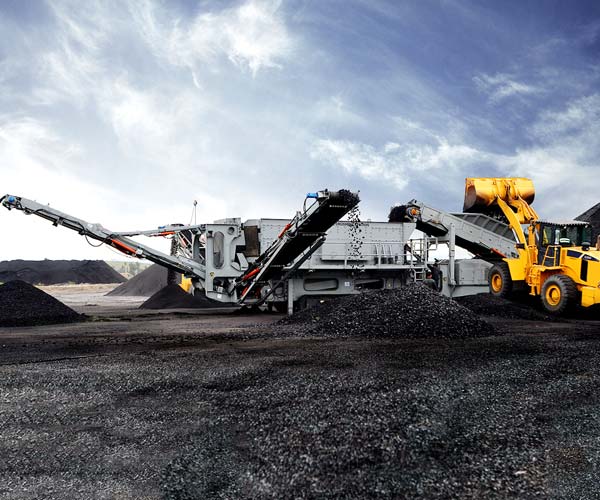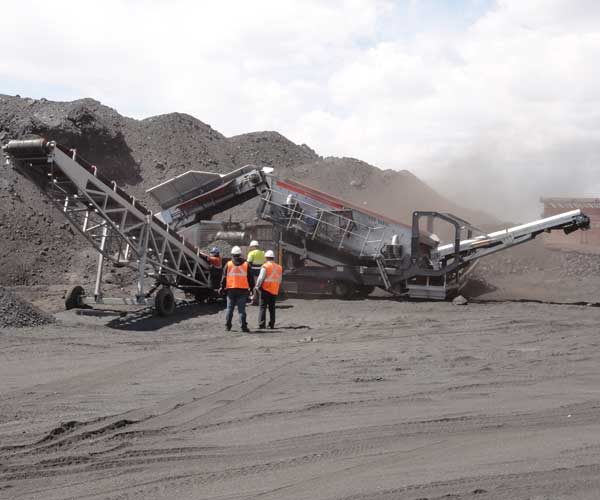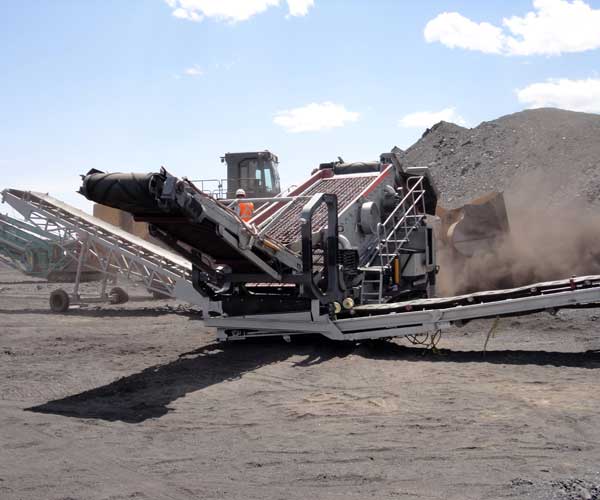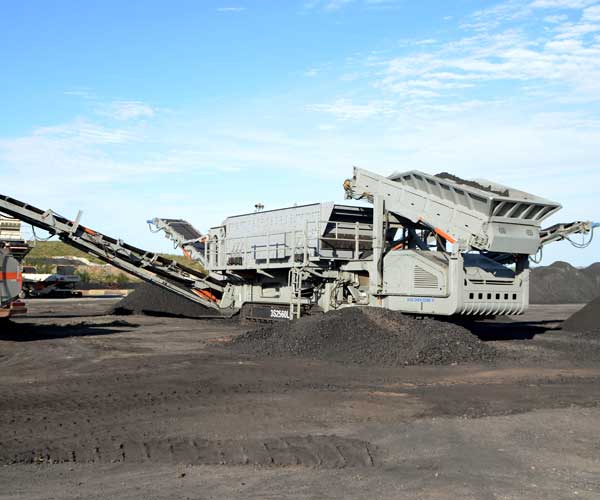
The rise of mobile coal screens and crushers represents a paradigm shift in the coal processing industry. Their mobility, efficiency, reduced environmental impact, and adaptability have not only streamlined coal processing operations but also paved the way for greater sustainability and cost savings.
24 Online Service

Coal has long been a fundamental source of energy worldwide, powering industries, homes, and infrastructure for centuries. However, as we stand on the precipice of a global energy transition towards cleaner and more sustainable alternatives, it is crucial to evaluate the current state of coal processing.
Traditional coal processing primarily involves two fundamental steps: mining and combustion. Let’s take a closer look at each of these stages:
Underground Mining: Historically, coal was often extracted through underground mining, where miners dug tunnels deep beneath the Earth’s surface to access coal seams. This method posed significant safety risks to workers and caused subsidence and land disturbances.
Surface Mining: In recent decades, surface mining, including mountaintop removal and open-pit mining, has become more prevalent. It involves removing large quantities of overlying soil and rock to access coal deposits, resulting in habitat destruction and water pollution.
Once mined, coal is transported to power plants, where it is burned to produce electricity. This combustion process releases carbon dioxide (CO2), sulfur dioxide (SO2), nitrogen oxides (NOx), and particulate matter into the atmosphere. These emissions contribute to air pollution and climate change.
While coal has provided affordable and reliable energy for centuries, it comes at a significant environmental cost:
Combustion of coal releases a cocktail of pollutants into the atmosphere. SO2 and NOx emissions lead to the formation of acid rain, which harms ecosystems and infrastructure.
Particulate matter from coal combustion poses severe health risks, causing respiratory diseases and premature deaths in exposed populations.
Coal is a major contributor to global greenhouse gas emissions, primarily in the form of CO2. These emissions are the leading cause of climate change, with far-reaching consequences for the planet.
Surface mining practices, such as mountaintop removal, disrupt ecosystems, destroy habitats, and lead to water pollution as runoff from mining sites contains heavy metals and toxins.
Given the environmental and health challenges associated with conventional coal processing, it is imperative that the coal industry undergoes significant transformation:
Innovation in clean coal technologies, such as carbon capture and storage (CCS), can help reduce CO2 emissions from coal-fired power plants. CCS captures CO2 emissions before they enter the atmosphere and stores them underground, preventing their contribution to climate change.
Sustainable mining practices, such as reclamation and land restoration, can mitigate the environmental impacts of mining. Restoring mined areas to their original state or repurposing them for other uses can help preserve ecosystems.
Transitioning from coal to renewable energy sources, such as solar, wind, and hydropower, is essential for reducing our reliance on coal and mitigating climate change. These sources provide cleaner energy options that can replace coal in the energy mix.
Enhancing the energy efficiency of coal-fired power plants can reduce emissions per unit of energy produced. Investment in advanced technologies and operational improvements can make existing coal plants less polluting.

One such transformation that has gained significant traction in recent years is the rise of mobile coal screens and crushers. These innovative pieces of equipment have revolutionized the coal processing industry, offering a host of advantages over traditional methods.
Before we dive into the advantages and real-world applications, let’s first elucidate what mobile coal screens and crushers entail and how they distinguish themselves from their conventional counterparts.
Mobile coal screens and crushers, as the name suggests, are portable machines designed to facilitate the processing of coal at various stages of production, from mining to transportation. These machines typically consist of a crusher, a screen, and a conveyor system, all integrated into a single unit that can be easily transported to different locations within a mining or processing site.
The adoption of mobile coal screens and crushers has brought forth a slew of advantages that have reshaped coal processing operations:
Mobile units are designed to adapt to changing operational needs. Whether it’s a shift in the location of mining activities or the requirement to process different grades of coal, these machines can be easily repositioned and reconfigured to meet these demands.
The mobility and quick setup of mobile equipment significantly reduce downtime. In traditional coal processing methods, transportation of coal to a stationary plant can be time-consuming and costly. Mobile units eliminate this bottleneck, resulting in more efficient coal processing operations.
The incorporation of advanced technologies in mobile coal screens and crushers has led to a notable reduction in environmental impact. These machines often come equipped with dust suppression systems, water sprays, and emission control devices, helping to mitigate the adverse effects of coal processing on the environment.
By minimizing the need for coal transportation and reducing downtime, mobile equipment can lead to substantial cost savings for coal processing companies. These savings can be invested in other aspects of the operation or contribute to a more competitive pricing structure.
Mobile coal screens and crushers often include safety features such as remote control operation, making them safer for operators. Additionally, their mobility allows for safer access to various parts of the mining site.
The success of mobile coal screens and crushers is best illustrated by their real-world applications across the coal industry:

The coal industry has long been a vital component of global energy production, providing a significant portion of the world’s electricity and fueling various industrial processes. However, the challenges associated with traditional coal processing methods have spurred innovation in the form of mobile coal processing solutions.
Before delving into the case studies, it’s crucial to understand why mobile coal processing solutions have gained prominence. Traditional coal processing often involves transporting raw coal from mines to centralized processing facilities, which can be expensive, time-consuming, and environmentally taxing. Additionally, these fixed facilities are often located far from the mining sites, leading to logistical challenges and increased operational costs.
Mobile coal processing solutions, on the other hand, offer a revolutionary approach by bringing the processing facilities directly to the mining sites. This shift minimizes transportation costs, reduces the carbon footprint associated with coal production, and enhances operational flexibility. Companies and regions that have embraced these mobile solutions are reaping substantial benefits.
China, the world’s largest coal producer and consumer, has been at the forefront of adopting mobile coal processing solutions to optimize its coal industry. In recent years, Chinese companies have deployed a fleet of mobile processing units equipped with cutting-edge technology.
One of China’s leading coal companies. Shenhua’s mobile coal processing fleet comprises modular units capable of washing, crushing, and sorting coal directly at the mining site. This approach has not only reduced transportation costs but also improved the quality of the final product. As a result, Shenhua Group has achieved higher yields and increased profitability while reducing the environmental impact of its operations.
India, another major coal producer, has also recognized the potential of mobile coal processing solutions. The state-owned coal mining company, has initiated several projects to implement mobile processing units in its operations.
One such project involves the use of mobile coal washeries in the coal-rich state of Jharkhand. These mobile washeries are compact and can be easily transported to remote mining locations. By adopting this technology, CIL has been able to reduce the transportation of raw coal and decrease the load on existing coal washeries. This has resulted in significant cost savings and enhanced operational efficiency for the company.
Moving away from Asia, let’s explore how mobile coal processing solutions have been embraced in Western Australia’s remote mining regions. The vast distances between mines and processing facilities in this part of the world have presented significant logistical challenges.
A prominent mining company in Western Australia, has invested in mobile processing solutions to overcome these challenges. The company employs a fleet of mobile crushing and screening units that can be rapidly deployed to various mine sites. This strategic approach has enabled Fortescue to adapt quickly to changing production demands and streamline its operations. As a result, the company has increased its coal processing capacity while reducing costs associated with long-distance transportation.
Our Projects
Copyright © ZENITH, All Right Reserved.
